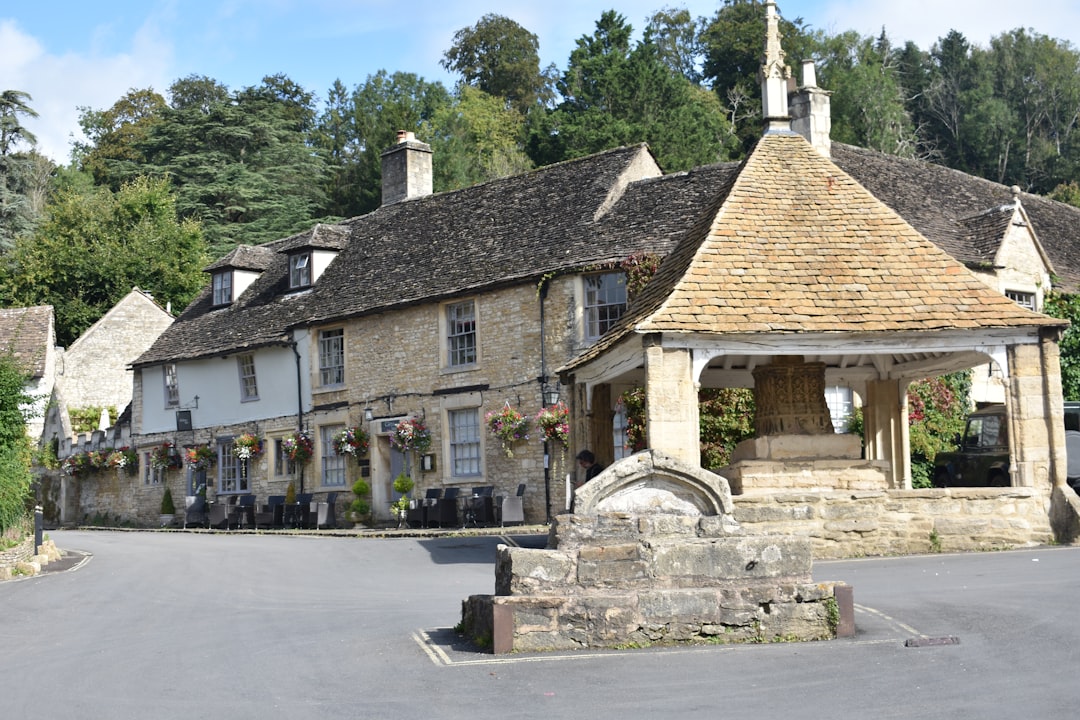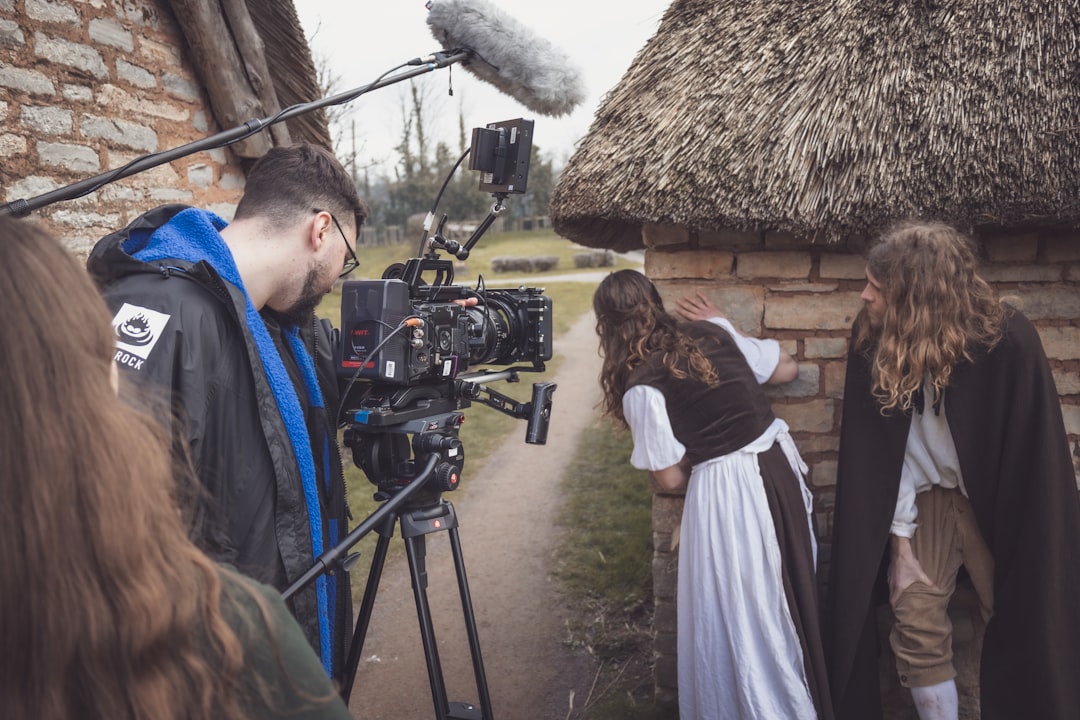Castle Combe is a place where time stands still, and the echoes of its rich history resonate through every cobblestone.
Nestled in the picturesque Cotswolds Area of Outstanding Natural Beauty in Wiltshire, England, Castle Combe is a village steeped in history and charm. Its story begins even before the village itself was established, with evidence of human activity dating back to the Roman occupation of Britain. The village's strategic position near the Fosse Way, an important Roman road, made it a valuable location over centuries [1][2].

Google Maps: Castle Combe Map
In this Article:
After the Romans left Britain in the 5th century, the area remained relatively quiet until the arrival of the Normans. The Normans constructed a fortified castle on the hill north of the village in the 12th century, remnants of which are still visible today. This castle gave Castle Combe its name and became the nucleus around which the village developed [1][2][3].
The Prettiest Village In England

Photo by Martina Jorden
Castle Combe's Golden Age
Castle Combe's golden age came in the medieval period when it became a hub for the wool industry. The wealth generated from this trade is reflected in the historic buildings that line its streets, such as the Market Cross and St. Andrew's Church, which houses one of the oldest working clocks in the country. The church is partly 12th-century with significant additions made in the 13th and 15th centuries, showcasing impressive medieval architecture [1].
During this time, Castle Combe was owned by various noble families, most notably by Reginald de Dunstanville, who was granted the estate by King Stephen in recognition of his service during the civil war that erupted after the death of Henry I. The village later passed to other prominent families, including de Montfort and Hungerford [4].
The cloth industry flourished in Castle Combe from the 14th to the 17th centuries, with local weavers becoming renowned for their high-quality cloth. The wool trade was so significant that it shaped much of the village's layout and architecture, including weavers' cottages and a woollen mill that now serves as a museum [1].
Castle Combe's involvement in historic events continued during the English Civil War, as it saw occupation by both Royalist and Parliamentarian forces, resulting in some damage to its structures. However, much of its ancient character was preserved or restored, allowing us to see today what is largely a faithful representation of a medieval English village [1].
Castle Combe In Modern Times

Photo by Callum Blacoe
In modern times, Castle Combe has been cherished not only by its residents but also by filmmakers and tourists alike. Its quintessential English countryside appearance has made it a sought-after location for film and television productions, further enhancing its profile as a historic and cultural landmark [1].
Castle Combe In Film
With its unspoiled medieval charm, Castle Combe has served as a backdrop for several notable films, including "The Wolf Man", "Stardust", Stephen Spielberg’s "War Horse", and even the original "Dr. Dolittle" film. Its picturesque streets and stunning architecture have provided the perfect setting for these cinematic masterpieces, further cementing Castle Combe's status as a truly remarkable destination.
Visitors to Castle Combe today can wander through its narrow streets, take in the breathtaking views of traditional Cotswold stone cottages, and experience an atmosphere that feels untouched by time. They can also enjoy local hospitality at historic inns and explore nearby attractions like the Castle Combe Circuit, which offers a different aspect of the village's history rooted in motor racing [1][5].
In summary, Castle Combe is not just a visual treat; it is a living museum that encapsulates English rural heritage. From its ancient beginnings to its medieval prosperity and beyond, Castle Combe has maintained its allure, making it one of England's most treasured historical villages.
FAQ
What is the history of Castle Combe?
Castle Combe has a rich history that dates back to the Roman era. It was originally known as Combe. The village grew in importance during the medieval period and became a thriving market town. It was granted a market charter in the 14th century.
Are there any historic landmarks in Castle Combe?
Yes, Castle Combe boasts numerous historic landmarks, among which the distinguished Market Cross takes center stage. Dating back to the 14th century, this structure acted as a gathering spot for traders and villagers. Another notable landmark is St. Andrew's Church, constructed in the 13th century. With its captivating architecture, exquisite stained glass windows, and reputedly the oldest medieval clock still functioning in England, it stands as a remarkable testament to the past.
Was Castle Combe ever a castle?
Castle Combe Castle stood to the north of the village. Situated on a limestone spur, the castle was a medieval motte and bailey structure that offered a commanding view of the Bybrook River. It is thought to have been built in the 12th century by Reginald de Dunstanville, 1st Earl of Cornwall. What made it noteworthy was its keep, which featured at least four, and possibly five, baileys. Although only some earthworks and fragments of stonework remain today, the site has been designated as a scheduled ancient monument since 1981 and is listed in the National Heritage List for England as the "Motte and bailey castle located 600 meters north of Castle Combe." You can find out more about an archaeological survey here.
How did Castle Combe prosper in the past?
Castle Combe thrived as a market town due to its location on the trade route between Bristol and London. It was known for its wool trade and cloth production, which brought wealth to the village during the medieval period.
Did Castle Combe play a role in any significant historical events?
While Castle Combe may not have played a major role in significant historical events, its history is intertwined with the broader historical context of England. It experienced changes during periods such as the Norman Conquest and the English Civil War, but it primarily remained an important local centre.
Has Castle Combe been used as a filming location?
Yes, Castle Combe has been a popular filming location for movies and TV shows due to its well-preserved medieval appearance. It has featured in films such as "Stardust" and "War Horse," as well as the TV series "Doctor Dolittle" and "Poirot."
Are there any historical tours available in Castle Combe?
Yes, there are guided tours available in Castle Combe that focus on its history and heritage. These tours offer insights into the village's past, pointing out key landmarks and sharing interesting anecdotes about its historical significance.
Are there any historical documents or artifacts on display in Castle Combe?
While there isn't a dedicated museum in Castle Combe, you can find some historical documents and artifacts on display at St. Andrew's Church. The church houses items of historical interest, including ancient brasses, stained glass windows, a medieval clock and memorial plaques.
Are there any ancient ruins or archaeological sites in Castle Combe?
Castle Combe itself does not have any ancient ruins or significant archaeological sites. However, the surrounding area of Wiltshire is known for its Neolithic sites such as Stonehenge and Avebury, which are worth visiting for those interested in ancient history.
Can I learn more about Castle Combe's history online?
Yes, there are various online resources available where you can learn more about Castle Combe's history. Official websites, local history societies, and tourism websites often provide detailed information about the village's historical background and significant events.
SOURCES:
